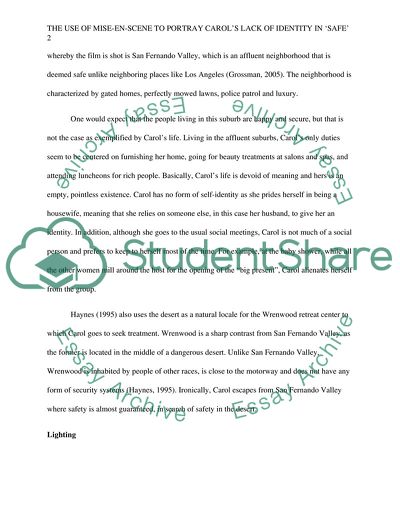Cite this document
(The Use of Mise-en-scene to Portray Carols Lack of Identity in Safe Coursework - 10, n.d.)
The Use of Mise-en-scene to Portray Carols Lack of Identity in Safe Coursework - 10. https://studentshare.org/visual-arts-film-studies/1836486-final-paper
The Use of Mise-en-scene to Portray Carols Lack of Identity in Safe Coursework - 10. https://studentshare.org/visual-arts-film-studies/1836486-final-paper
(The Use of Mise-En-Scene to Portray Carols Lack of Identity in Safe Coursework - 10)
The Use of Mise-En-Scene to Portray Carols Lack of Identity in Safe Coursework - 10. https://studentshare.org/visual-arts-film-studies/1836486-final-paper.
The Use of Mise-En-Scene to Portray Carols Lack of Identity in Safe Coursework - 10. https://studentshare.org/visual-arts-film-studies/1836486-final-paper.
“The Use of Mise-En-Scene to Portray Carols Lack of Identity in Safe Coursework - 10”. https://studentshare.org/visual-arts-film-studies/1836486-final-paper.


